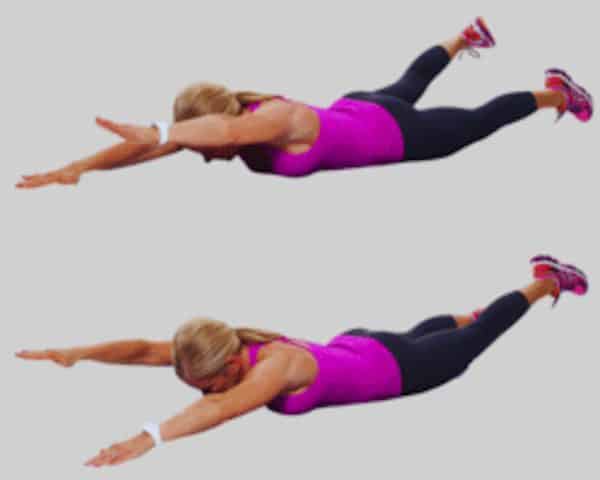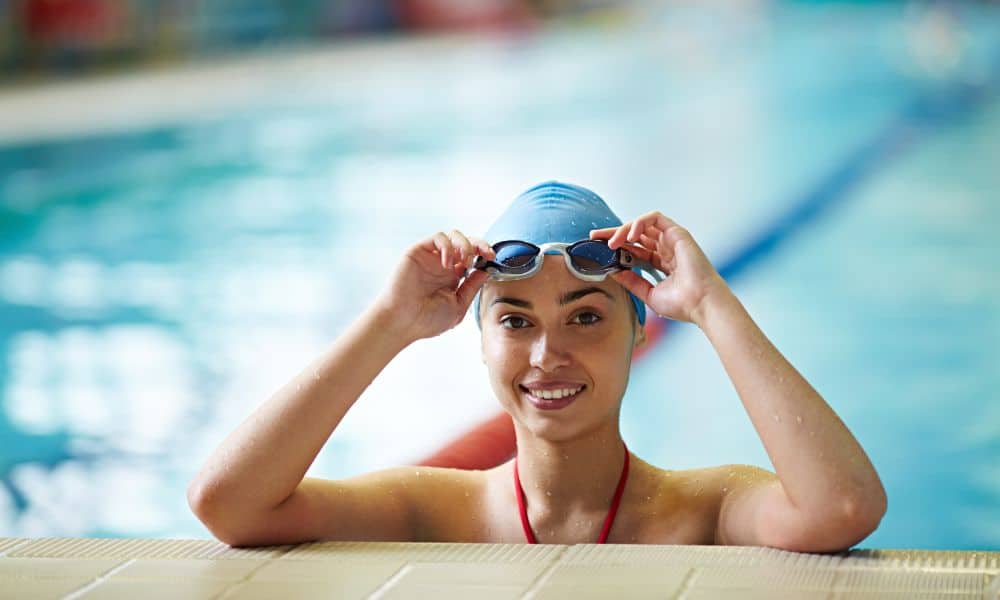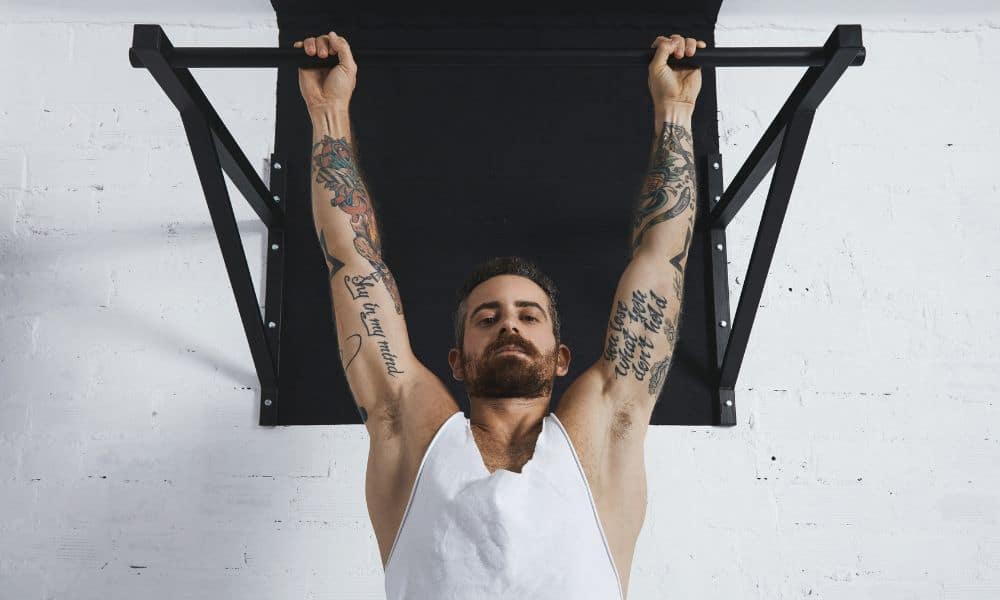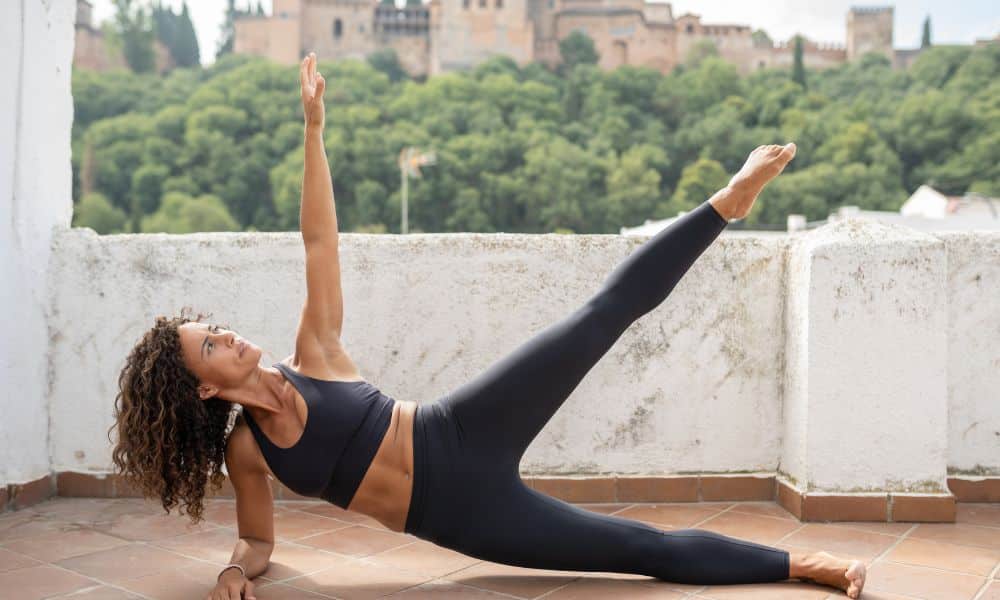The swimmer’s exercise gets its name from performing swimming movements. Therefore, you will need to alternate raising your limbs, just like you would do while swimming. Here are some basic facts you need to know about this exercise before you add it to your workout routine.
How to Do?
Start from the floor face down. Then, stretch your arms over your head. Next, lift your upper body in an arch as you lift your chest away from the ground. Then contract your back and glute muscles. Also, tuck in your chin to keep looking toward the ground.

After that, lift your right arm from the ground. Simultaneously, lift your legs from the ground one at a time in a controlled swimming movement. Do not raise your legs more than one foot off the ground. As you lower down your right arm, lift your left arm.
Make sure that your glute muscles stay engaged throughout the exercise. Thus, do not over lift your legs while performing the exercise. Doing so will cause you to arch your back, exposing you to the risk of a lower back sprain.
Muscles It Works
Some muscles that get stronger during the swimmer’s exercise are:
1. Shoulder Blade Rotator Muscles
The shoulder blades rotate towards the upper direction when you go forward and contract and relax during the freestyle. The primary body muscles which rotate the shoulder blades include the trapezius muscles.
Also, the serratus muscles support your upper limbs as they reach upward. These muscles are located at the top portion of the rib cage.
The swimmer’s exercise works the extensor muscles of your arms as you push and pull, making strokes. The latissimus dorsi muscle extends the shoulder.
Also, the pectoral muscles activate as you pull during the movement of the strokes. This is because the shoulders rotate internally. Finally, the back and the deltoid muscles will hyperextend to complete the pushing part of the stroke.
2. Hip Muscles and Leg Muscles
During the kicking movement, your legs separate and draw in together. This produces propulsion. Hip flexors and gluteus maximus muscles handle these movements.
The kick energy depends on your foot’s motion extending forward. The gastrocnemius and soleus muscles are mainly responsible for flexing the foot forward.
3. Core Muscles
The core muscles stabilize your spine as you do the swimmer’s exercise. Also, the core of your body helps stabilize your upper-body and hip movements. You can maintain a streamlining form for the exercise with stronger core muscles.
They help improve the movement’s overall effectiveness as you increase the energy transfer between the upper and the lower portions. The swimmer’s exercise helps your body move as a unit. The core muscle group includes the outer and the inner abs, the lower back, and the hip muscles.
Physical Skill It Improves
As the name implies, the swimmer’s exercise improves your body skills for swimming. If you want to swim or are a professional athlete in water sports, try doing this exercise.
Including this exercise in your daily routine will help you work all major body muscles. It will improve your agility as well. Your body muscles will grow stronger as you add some resistance to the exercise. You can do so by adding some bands or loops to the exercise.
This is also helpful for athletes who want to improve their skills as they do this exercise routinely. Also, people like this exercise to improve their overall stability and flexibility. These traits help do activities such as cycling and gymnastics.
If you are looking for exercises that provide a full-body workout, then the swimmer’s exercise is one of the best choices. It does not require any equipment and still helps improve your strength and endurance for all major muscle groups in your body.
Incorrect Ways to Perform
One of the most common mistakes for the swimmer’s exercise is to bend your knees as you kick. Doing this will cause more resistance. So, make sure that your legs stay as straight as possible.
Also, you can use this exercise for rehab and pre-rehab as you do swimming-related activities. This is because water sports cause shoulder injuries. These types of injuries are commonly called a swimmer’s shoulder.
Therefore, make sure that you work on strengthening your rotator cuffs. For that, you can use some resistance, such as a band. You can do the stretch cord for internal and external rotation. Make sure your elbow plants firmly on your side. This will help you to keep your rotator cuff strong.
It is essential to work on your flexibility. For example, if you take quick strokes during the swimmer’s exercise, you will restrict your range of motion. So, to fight the contracting effects of your body, stretch after your sessions.
Also, work on pushing through your comfort zone as you do the exercise. However, some people mistake doing too many strokes with the swimmer’s exercise. If you do so, you may exhaust your muscles, leading to an injury. This is a common mistake people, and professional swimmers make while doing this activity.
Modifications of Swimmer’s Exercise
The swimmer’s exercise is one of the most straightforward exercises to learn. However, you can add some modifications to the routine to meet your needs. Some modifications for doing the swimmer’s exercise are:
1. Pilates Alternation of Swimmer’s Exercise
The first modification for swimmer’s exercise will involve Pilates. For doing this variation, you will need to lie over your stomach. First, you will need to keep your legs straight and joined. Then, try stretching your arms over your head and keep your shoulder blades in the back.
Next, put your shoulders away from the upper portion of your neck, i.e., the ears. Then, you will need to contract your abdominal muscles inward. This will help to lift the belly button away from the ground.
2. Alternating Leg and Arm Plank
This is another modification for the swimmer’s exercise, which helps to move your muscles continuously. You need to focus on stabilizing your body in this exercise variation.
For doing this variation, first, hold a plank position. Then, extend the left leg and the right arm, and hold this position for some seconds. After that, repeat the movement using your left and right leg.
This exercise will help to build your connection between the mind and body. This is especially beneficial for backstroke and freestyle swimming exercises.
3. Alternating Superman
This reflects the conventional pose of the swimmer’s exercise. Through this practical and straightforward variation, you can build a lot of strength in the glute muscles, lower back, and hamstrings. Work on the upward direction of the dolphin kick and freestyle. This part is often weak in some professional swimmers. This modification of the swimmer’s exercise will help improve your shoulders’ overall stability.
Depending on your requirement, you can increase or decrease the difficulty level of the conventional exercise. These modifications work differently on different individuals. So, it is best to try them all and find the one that works best. To make the exercise more challenging, you can add some weights or increase the time you flex your muscles.
The last word on the swimmer’s exercise
The swimmer’s exercise is perfect for building shoulder strength, core endurance, and pelvic strength. Also, it aids in improving the stability and flexibility of your body. This helps to increase your physical performance. Including this exercise in your routine workout will engage all of your muscles.
As a result, you will attain better endurance, stability, flexibility, and stronger muscles. Again, this will help to increase your overall fitness without equipment. Have you tried this exercise? If so, let us know about your experience in the comment section.




